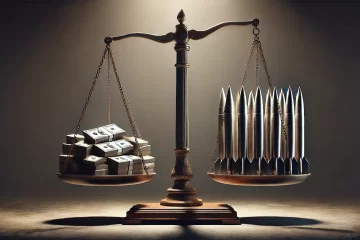The city council of Okinawa’s Ishigaki-shi approved legislation June 22 to change the district name of the Senkaku Islands from Tonoshiro to Tonoshiro Senkaku, prompting a stern response from the president the Republic of China (ROC) on Taiwan, Tsai Ing-wen. At a June 24 press conference, the president reaffirmed the ROC claim over the islands, which are known locally as the Diaoyutai Islands, and pledged to protect the country’s sovereignty and fishing rights over this territory.
This tough stance may seem puzzling. For one thing, Tsai’s Democratic Progressive Party (DPP), having a Taiwan-centered orientation, has historically been far less keen than the Kuomintang (KMT) to press on issues of ROC territorial claims outside of Taiwan proper, as these are widely seen as a holdover from the era of Republican China. For this same reason, Tsai has been perceived as being more amenable to developing deeper Taiwan-Japan ties, especially in such areas as security cooperation and trade relations—this latter would help both countries avoid keeping too many eggs in the China basket.
Likewise, from the Japanese perspective, there has been an embrace of—and high hopes for—the Tsai administration, as it promised an end to the previous Ma Ying-jeou administration’s China-friendly policies.
In short: Taiwan and Japan make natural allies in a region and an era marked by an increasingly aggressive China. Why, then, Taiwan’s tough talk on the Senkakus, an issue which few Taiwanese people care about?
Earlier this month, the Executive Yuan—the executive branch of the government of the Republic of China (ROC) on Taiwan—promulgated the island’s first-ever marine policy white paper on June 4, 2020. This move came at a time when the maritime security environment in the East and South China seas is becoming increasingly volatile as a result of China aggressively pressing its territorial claims in these bodies of water. The document has as its primary goal to provide consistent guidelines to government departments for implementing the sustainable development of ocean-related policies. According to the head of the ROC Ocean Affairs Council, the idea behind the white paper is to transform Taiwan into a “marine country,” and one that is “ecological, safe, and prosperous.”
The white paper is the result of the framework for the country’s ocean management, as approved by the Legislative Yuan (Taiwan’s Congress) in November 2019. The “basic act for ocean affairs,” as it is called, is another attempt to integrate all government agencies that are stakeholders in marine and maritime issues.
The efforts of the administration of ROC President Tsai Ing-wen to implement more coherent and coordinated ocean policies could not be timelier. Taiwan is an island, and it is surrounded by waters that are especially turbulent, from a geopolitical perspective. Moreover, for too long, the ROC government has paid short shrift to its littoral holdings, being reticent to conceive of itself as a maritime power. But an island nation it is, and it is about time that the DPP administration acknowledges this with its actions.
The paper U.S. Strategic Mobility in Deployment to Ensure Regional Security, written by Su Tzu-yun (蘇紫雲), a senior researcher at the Institute for National Defense and Security Research, affirmed Taiwan’s status as a nation with a stake in the events that transpire in the East and South China seas. Su pointed out that the PRC has been effective in leveraging the COVID-19 global pandemic to beef up Chinese power-projection capabilities, in the South China Sea and surrounding maritime areas, due in part to the reduced presence of the U.S. Navy. He also asserted that the instability has had a deleterious effect on key navigation channels such as the Miyako Strait and the Bashi Channel, as well as the East China Sea.
What Su did not take into account was domestic inertia and party rivalry: That the task of coordinating and integrating the many national and local marine agencies in Taiwan, and overcoming the inter-party conflicts over maritime ideologies, may be more daunting than facing the geopolitical maritime perils that await them offshore. These two elements have long been roadblocks preventing Taiwan from being able to respond adequately to its urgent marine and maritime challenges.
In terms of coordination, the ocean-related matters in Taiwan involve at least 15 different agencies—some of whose jurisdictions overlap—ranging from technical departments to a general ministry, and from agencies that are directly involved with maritime issues to those for which ocean-related matters are only peripheral.
The main consequence of the difference in scope, focus, and structure of these government agencies—as well as the destructive yet inevitable inter-agency rivalries that tend to emerge in bureaucracies with overlapping responsibilities—has been an inability to coordinate actions effectively. This makes it difficult to build up the momentum for the kind of change that is needed in order to remedy the above problems, making the proper administration of maritime affairs a difficult task.
Until now, nothing related to the marine or maritime policies in Taiwan has been integrated. Instead, there has been a patchwork of policies promulgated by a plethora of departments, each with its own marine-related area of oversight. Fishery issues are dealt with by the fishery agency, for example, and shipping issues, with the shipping agencies, and so on, until the proverbial right-hand doesn’t know what the left hand is doing.
Part of the reason for the different governing paradigms in Taiwan is that some sectors within the Pan-Blue camp (to wit: the KMT) still possess an outdated terrestrial or land-oriented mentality, inherited from the Chinese tradition from which this party evolved. This terrestrial mentality, however, also tends to make the KMT more assertive in terms of territory, as they see it essentially from the sovereignty perspective. It was under KMT leadership that the ROC laid the foundation for the modern Chinese maritime claims (adopted almost entirely by the PRC, interestingly). Thus, the PRC’s adherence to the U-shaped nine-dash line, originally published by the ROC in December of 1947. In this view, defense of the territorial claims in the area encompassed by this line is a natural position, and anything otherwise would be politically impracticable and ideologically contradictory.
On the other hand, the Pan-Green Camp, led by the DPP, tends to take the opposite tack. First, it prefers to focus on environmental questions, as this fits well with the DPP’s idea of being a friendly stakeholder in the disputes, given that the environmental protection discourse tends to have few opponents among the other claimants due to its nature as an issue of collective interests.
Finally, in diverting from the territorial-sovereignty discourse, the DPP intends to bring Western powers onside, by positioning its claims under the UNCLOS umbrella. Moreover, it will try to keep its distance from any mention of the U-shaped line map for two reasons: First, this presupposes a Chinese territorial centered view of the disputes, adoption of which would make the DPP undistinguishable from the KMT (and the PRC, for that matter). Second, the nine-dashed line map defense is not feasible under the UNCLOS perspective and would be perceived as extremely aggressive by the international community. These do not contribute to the way the DPP must position itself.
Therefore, the challenge of integrating ROC government departments and coordinating a coherent maritime policy is not a simple one. Whatever the effectiveness of the white paper presented by the Executive Yuan this year might bring in terms of day-to-day maritime and marine operations, a modus vivendi must be found between the Blues and the Greens. From this perspective, the Tsai administration’s tough talk on the Japanese redesignation of the Senkaku Islands may be interpreted as an olive branch to the Pan-Blue coalition—both politically, and to the many civil servants serving in the relevant ministries and departments who are known to have blue-leaning sympathies—in order to secure buy-in for this project.
If Tsai fails to find such common ground, then any of the eventual gains accrued from the current administration will be thrown away, just as both parties have done to each other every other time that a transition of power has taken place. The stakes are too high for the Taiwanese people to accept this outcome.



